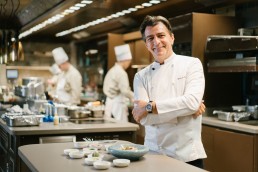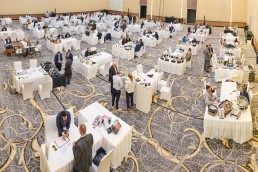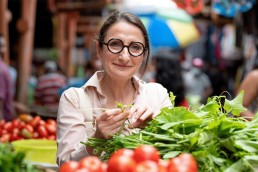Fusing tradition and modernity, the new outpost from restaurateur Mike Robinson celebrates the best of the British larder, writes Eleanor Howard.
Located on South Parade, just a short walk from cultural highlights such as the magnificent Bath Abbey and Pulteney Bridge, a series of Grade I-listed Georgian townhouses have been transformed into a boutique hotel inspired by the culture, character and history of Bath.
The venture is the newest addition to IHG’s Hotel Indigo brand, which has seen significant expansion across Europe in recent years thanks to additions in Manchester and Venice. Much like other properties in the portfolio, Hotel Indigo Bath takes inspiration from its surroundings; in this case, it’s the literature and romance of the Somerset city as well as its historic architecture and variety of galleries and museums.
Led by Henry Reeve, IHG’s Director of Interior Design, the 166-key property follows the brand’s promise of no two hotels being alike, so along with a unique design scheme, it brings a bespoke dining concept in the form of The Elder. Named after the street’s original architect, John Wood the Elder, the restaurant is a celebration of seasonality and sustainability, with a firm emphasis on wild food. The concept is the brainchild of restaurateur Mike Robinson following the success of The Woodsman at Hotel Indigo’s Stratford-upon-Avon outpost, which opened in 2019.
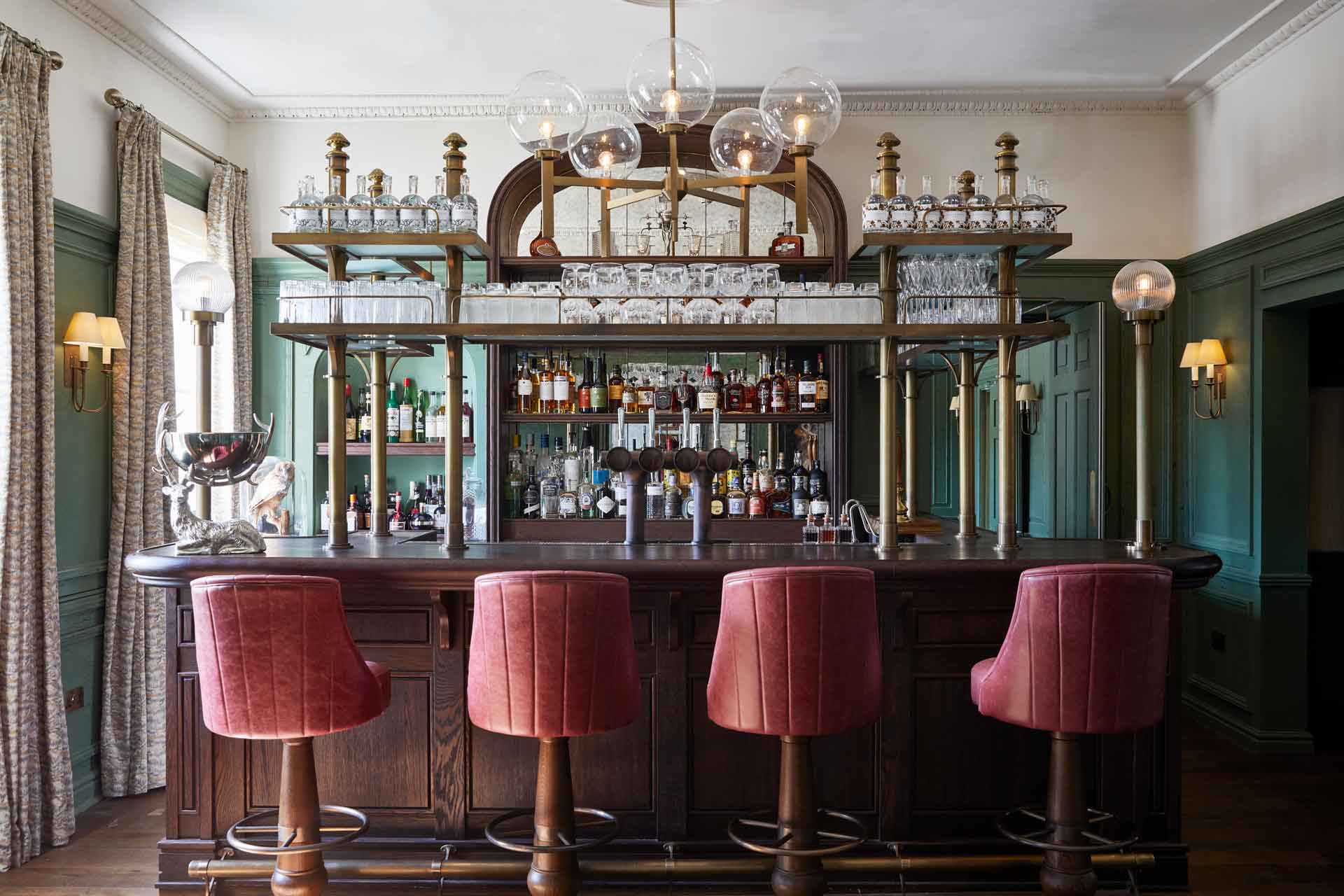
In Bath, The Elder has been designed by LA- and London-based studio, Fettle, who wanted to bring a distinctive look and feel so as to appeal to locals and passers-by as well as overnight guests. “The design of the restaurant space is deliberately different to that of the rest of the hotel,” confirms Andy Goodwin, co-founder and Director of Fettle. “The client team wanted to establish the restaurant as an independent offering, so we worked with the wider design team in the initial stages to ensure there was a common fluidity, then further developed the finishes, furniture and lighting for a point of difference.”
With this in mind, Fettle centred the narrative around three principal pillars: the Georgian heritage of the building, Bath’s strong literary history and the ethically sourced British food offering. The resulting sequence of spaces, which are spread across four of the nine townhouses, each have their own charm and character expressed through the interior’s carefully selected materials. “When we looked to develop the materials palette, we took our lead from the finishes that were either part of the existing building, or that would have been found within similar buildings of this age,” reveals Goodwin. “All panelling in the restaurant has been finished in a traditional green paint that features a crackle glaze to add a sense of age and texture, and this has been paired with aged oak timber flooring and brass details.”
The look is best illustrated by the main focal point of the scheme. “We designed a traditional timber panelled bar with an impressive antique brass gantry and fluted brass post lights,” Goodwin continues. “It sits in front of an arched timber back bar fitted with a bespoke antique mirror that displays an array of spirit bottles.”
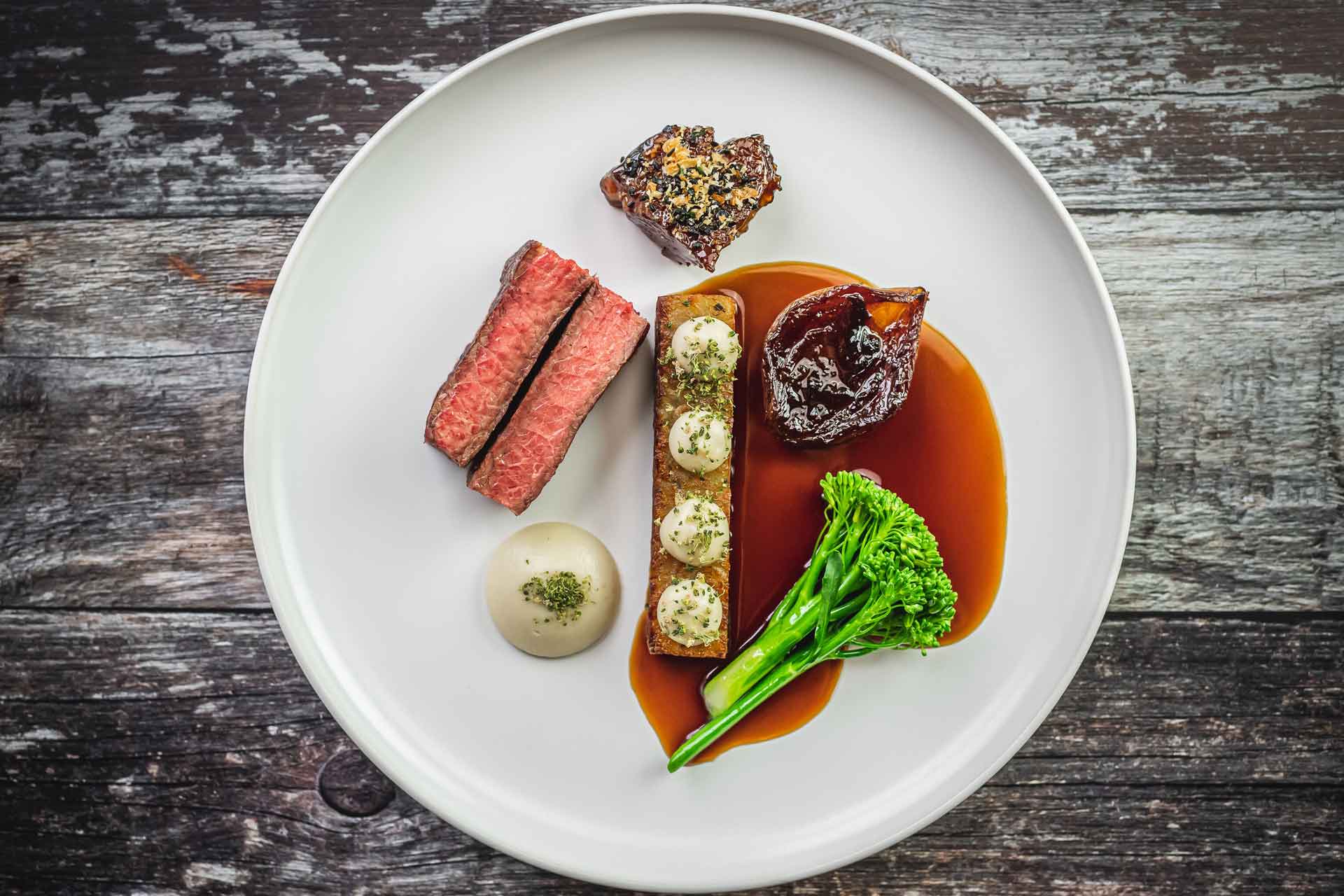
The main dining space is furnished with bespoke lighting and custom furniture, such as tan leather banquettes and timber-framed dining chairs, while walls are lined with a carefully curated selection of artwork sourced from antique fairs and local artists.
With the hotel’s architectural features protected by a listed status, restoration played a key role in Fettle’s design concept. Existing wall panelling has been sensitively restored and repaired for example, while the aptly-named Pink Room – a private dining space – stands in honour of the past. “The room is of historical importance as it has remained relatively untouched over the years,” Goodwin explains. “We retained the existing panelling and painted it in a more contemporary pink finish, and introduced deep red velvet curtains and custom dining chairs upholstered in a rich oxblood leather. The original fireplace has also been retained and restored, and whilst not in use, it provides a beautiful focal point.”
Taking charge of the menu is Executive Chef Gavin Edney, who was previously at The Woodsman. Raised in Cornwall, where he travelled to school by boat, Edney brings his passion for fish fresh to the city. “The Elder celebrates the best of the British larder,” he notes. “The British countryside and seas are our inspiration so we focus on seasonal, wild food, carefully harvested from land that has been managed for thousands of years.”
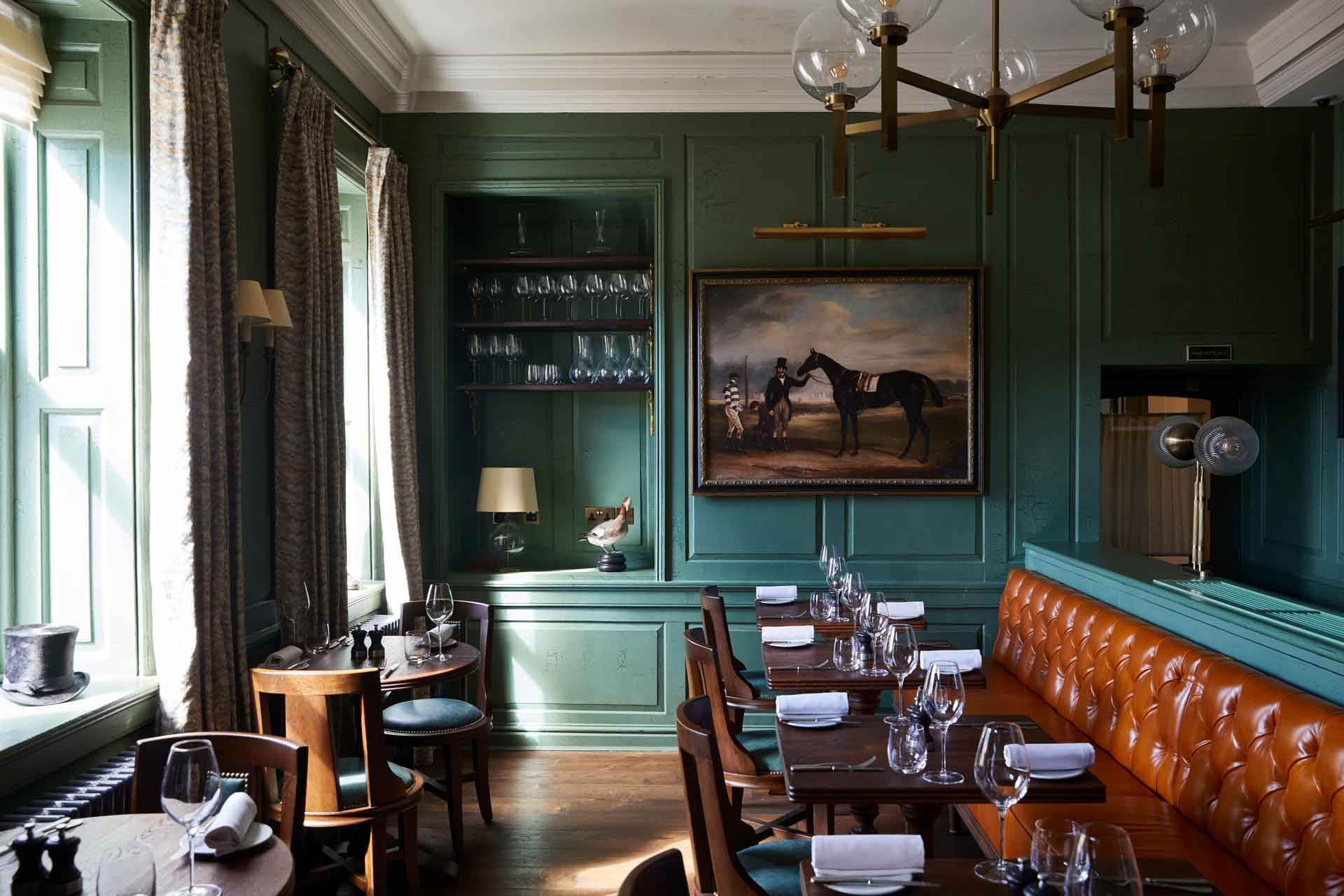
From Berkshire hare to Bathurst Estate fallow deer, Cornish hake to vegetables grown in the kitchen garden, the offering is largely dictated by nature. Highlights include the warm Dorset crab tart with lemon mayonnaise and chimichurri, the tournedos of Cornish hake Rossini and the damson soufflé.
And Edney is passionate about cultivating the restaurant’s relationship with producers too. “We love working closely with our suppliers, it’s an incredibly important aspect of what we do,” he reveals. “Mike Robinson, the owner of The Elder, manages thousands of acres of land so all our game is supplied by his company, Owl Barn Larder. Our fish is supplied by Flying Fish in Cornwall who are world-class; the fish reaches our front door within 24 hours of being caught and is absolutely top-quality.”
A true field-to-table dining experience, all of the food is harvested, prepared and cooked onsite. “Nothing is delivered in portions, we like to do the whole thing ourselves with both meat and fish,” continues Edney. “That way, we’re able to use the entire animal as we please, nose to tail; it means our entire kitchen staff are skilled in butchery and fishmongery.”
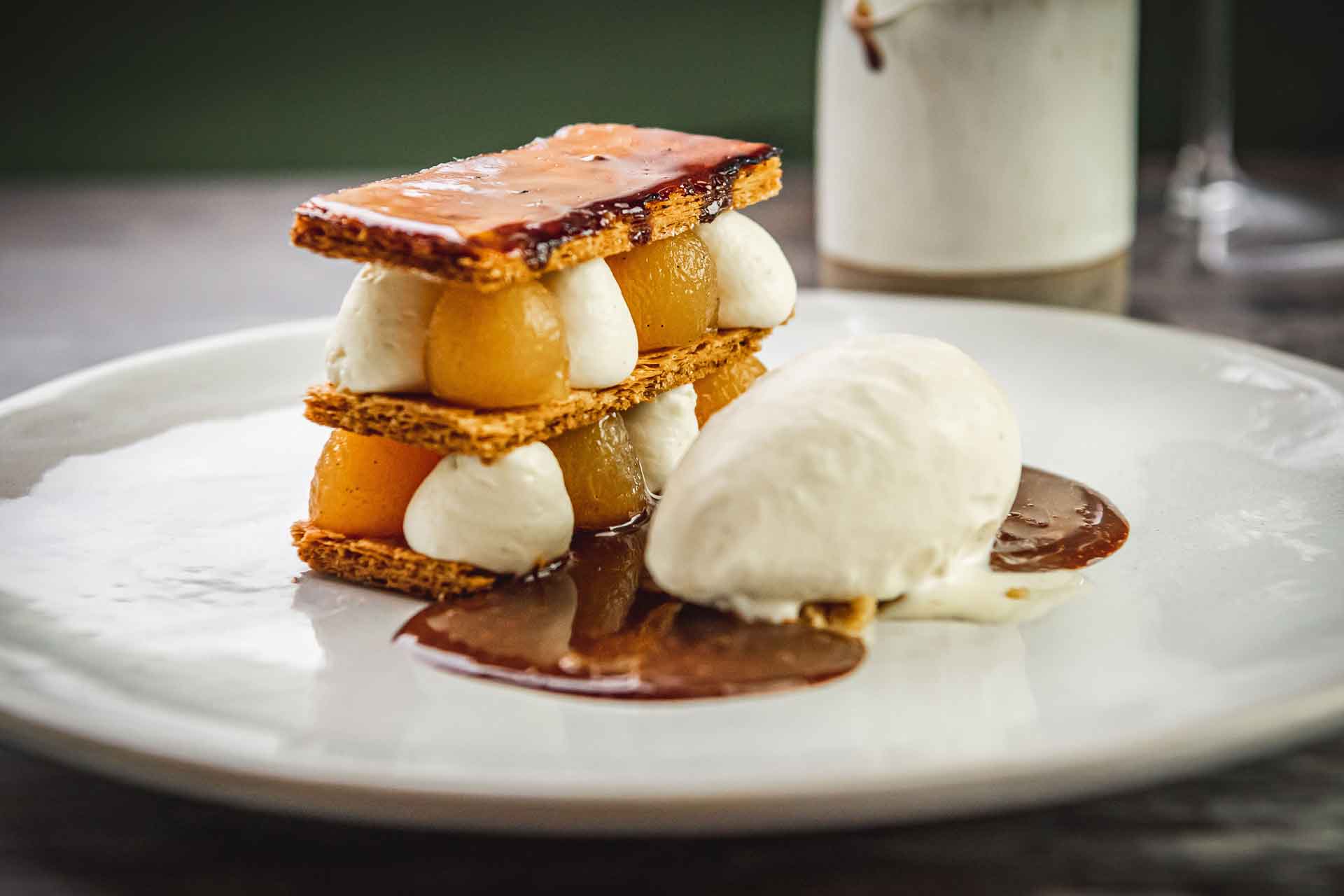
The merging of past and present extends to the drinks programme too, with vintage classics and contemporary botanical cocktails making the list. Popular amongst guests are the Barrel Aged Negroni – which is aged in-house – and the clarified Pina Cōlada. Edney has also worked with Beverage Manager Olly Smith to curate thoughtful cocktail and dessert pairings, rounding off the guest experience.
Still to come at Hotel Indigo Bath is The Jib Door, a members’ club occupying the lower levels of the property. Playing on the more eccentric elements of the design narrative, Fettle has used low level timber panelling painted in a dark green tone, a brass bar counter, statement mirrors and a custom brass bottle display back bar to create a space that feels both refined and exclusive. The original stone basement vaults have been retained, yet reimagined as an intimate whisky bar with a leather fronted table bar offering cocktail service. Specially sourced taxidermy and artwork work together with statement lamps, butterfly display cases and candles to create a sense of drama.
After opening in September and closing again in November due to the national lockdown, Edney’s team at The Elder appear to have successfully conquered the numerous obstacles presented by the pandemic. The uncertainty of the coming months may present further challenges, but with an end in sight, the team at The Elder seem well-equipped to weather any oncoming storm.
IN A BITE:
Owner: Somerset Capital
Hotel Operator: IHG
F&B Operator: Mike Robinson
Architecture: Darling Associates
Interior Design: Fettle
Graphic Design: Proud Robinson
Executive Chef: Gavin Edney
F&B Manager: Paul Halliwell
Head Sommelier: Olly Smith
www.theelder.co.uk
CREDITS
Words: Eleanor Howard
Food Photography: © Sarah Farnsworth
Interior Photography: Helen Cathcart
Magazine: Supper 22
Related Posts
18 April 2023
A New Level: An interview with Yannick Alléno
17 November 2022
